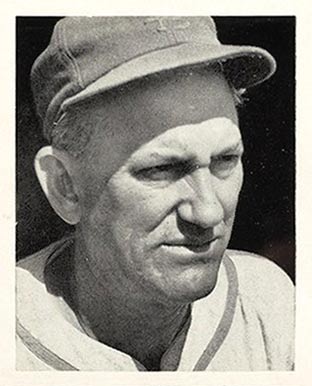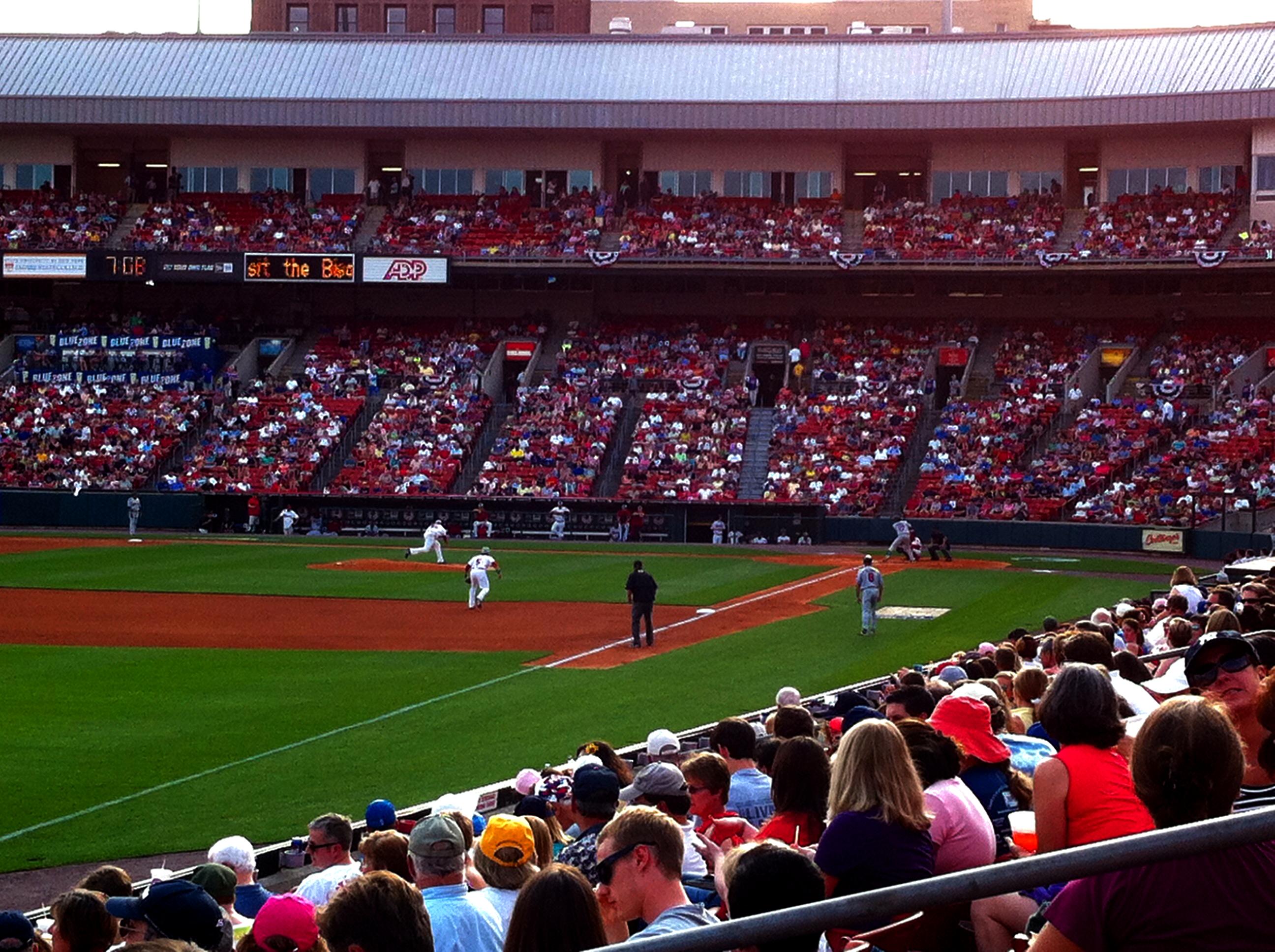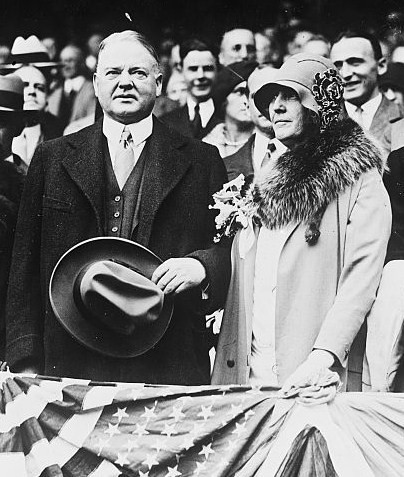|
Mike González (catcher)
Miguel Angel González Cordero (September 24, 1890 – February 19, 1977) was a Cuban catcher, coach and interim manager in American Major League Baseball during the first half of the 20th century. Along with Adolfo Luque, González was one of the first Cubans or Latin Americans to have a long off-field career in the U.S. Major Leagues. Born in Havana, González played winter baseball in the Cuban League from 1910 to 1936 and was a long-time manager. He was elected to the Cuban Baseball Hall of Fame in 1955. In the U.S.: catcher, coach and manager González, a right-handed-hitting catcher, made his National League debut with the 1912 Boston Braves, playing only one game. During that time he played "Negro baseball" with integrated teams from Cuba, the Cuban Stars in 1911, 1912 and 1914, and the Long Branch Cubans in 1913. During his organized baseball career he also appeared with the New York Lincoln Giants in 1916. González returned to the Major Leagues with the Cincinnati ... [...More Info...] [...Related Items...] OR: [Wikipedia] [Google] [Baidu] |
Catcher
Catcher is a position in baseball and softball. When a batter takes their turn to hit, the catcher crouches behind home plate, in front of the (home) umpire, and receives the ball from the pitcher. In addition to this primary duty, the catcher is also called upon to master many other skills in order to field the position well. The role of the catcher is similar to that of the wicket-keeper in cricket. Positioned behind home plate and facing toward the outfield, the catcher can see the whole field, and is therefore in the best position to direct and lead the other players in a defensive play. The catcher typically calls for pitches using hand signals. The calls are based on the pitcher's mechanics and strengths, as well as the batter's tendencies and weaknesses. Essentially, the catcher controls what happens during the game when the ball is not "in play". Foul tips, bouncing balls in the dirt, and contact with runners during plays at the plate are all events to be handled by th ... [...More Info...] [...Related Items...] OR: [Wikipedia] [Google] [Baidu] |
Adolfo Luque
Adolfo Domingo De Guzmán "Dolf" Luque (August 4, 1890 – July 3, 1957) was a Cuban starting pitcher in Major League Baseball (MLB) from to . Luque was enshrined in the Cuban Baseball Hall of Fame in 1957 and the Cincinnati Reds Hall of Fame in 1967, as well as in the Mexican Baseball Hall of Fame in 1985. Luque was not only the first Latino pitcher in MLB, but also the first to win a World Series victory, and the first to lead the Leagues in wins and shutouts. A native of Havana, Luque played winter baseball in the Cuban League from 1912 to 1945 and was also a long-time manager in the league. Additionally, he managed in Mexico in all or parts of eight seasons spanning 1946–1956.Cuban, Minor, Negro and Mexican leagues statistics ''Baseball Reference''. Retrieved on March 23, 201 ... [...More Info...] [...Related Items...] OR: [Wikipedia] [Google] [Baidu] |
Farm System
In sports, a farm team, farm system, feeder team, feeder club, or nursery club is generally a team or club whose role is to provide experience and training for young players, with an agreement that any successful players can move on to a higher level at a given point, usually in an association with a major-level parent team. This system can be implemented in many ways, both formally and informally. It is not to be confused with a practice squad, which fulfills a similar developmental purpose but the players on the practice squad are members of the parent team. The term is also used as a metaphor for any organization or activity that serves as a training ground for higher-level endeavors. For instance, business schools are occasionally referred to as "farm clubs" in the world of business. Contracted farm teams Baseball In the United States and Canada, Minor League Baseball teams operate under strict franchise contracts with their major league counterparts. Although the vast ... [...More Info...] [...Related Items...] OR: [Wikipedia] [Google] [Baidu] |
American Association (20th Century)
American Association may refer to: Baseball * American Association (1882–1891), a major league active from 1882 to 1891 * American Association (1902–1997), a minor league active from 1902 to 1962 and 1969 to 1997 * American Association of Professional Baseball, an independent league founded in 2006 Football * American Association (American football), a minor professional American football league that existed from 1936 to 1950 {{disambig ... [...More Info...] [...Related Items...] OR: [Wikipedia] [Google] [Baidu] |
At-bat
In baseball, an at bat (AB) or time at bat is a batter's turn batting against a pitcher. An at bat is different from a plate appearance. A batter is credited with a plate appearance regardless of what happens during their turn at bat, but a batter is credited with an at bat only if that plate appearance does not have one of the results enumerated below. While at bats are used to calculate certain statistics, including batting average and slugging percentage, a player can qualify for the season-ending rankings in these categories only if they accumulate 502 plate appearances during the season. Batters will not receive credit for an at bat if their plate appearances end under the following circumstances: * They receive a base on balls (BB).In 1887, Major League Baseball counted bases on balls as hits (and thus as at-bats). The result was high batting averages, including some near .500, and the experiment was abandoned the following season. * They are hit by a pitch (HBP). * Th ... [...More Info...] [...Related Items...] OR: [Wikipedia] [Google] [Baidu] |
1929 World Series
The 1929 World Series featured the American League (AL) champion Philadelphia Athletics playing against the National League (NL) champion Chicago Cubs. The Athletics defeated the Cubs in five games to win the Series. This Series featured the Athletics' "Mack Attack" (so called in honor of longtime A's owner-manager Connie Mack), in which they overcame an eight-run deficit by scoring 10 runs in the home half of the seventh inning in Game 4 (before two strikeouts by Pat Malone ended it) to gain a 10–8 victory, which ensured the Series did not even out at two games won apiece. The Athletics were further exalted in the middle of the "Mack Attack" when Cubs center fielder Hack Wilson lost Mule Haas's fly ball in the sun for a fluke three-run inside-the-park home run, bringing the A's to within a run at 8–7. It was the last occurrence of an inside-the-park home run in a World Series game until Game 1 of the 2015 World Series. Background Because seven of the eight regular ... [...More Info...] [...Related Items...] OR: [Wikipedia] [Google] [Baidu] |
Run Batted In
A run batted in (RBI; plural RBIs ) is a statistic in baseball and softball that credits a batter for making a play that allows a run to be scored (except in certain situations such as when an error is made on the play). For example, if the batter bats a base hit which allows a teammate on a higher base to reach home and so score a run, then the batter gets credited with an RBI. Before the 1920 Major League Baseball season, runs batted in were not an official baseball statistic. Nevertheless, the RBI statistic was tabulated—unofficially—from 1907 through 1919 by baseball writer Ernie Lanigan, according to the Society for American Baseball Research. Common nicknames for an RBI include "ribby" (or "ribbie"), "rib", and "ribeye". The plural of "RBI" is a matter of "(very) minor controversy" for baseball fans:; it is usually "RBIs", in accordance with the usual practice for pluralizing initialisms in English; however, some sources use "RBI" as the plural, on the basis tha ... [...More Info...] [...Related Items...] OR: [Wikipedia] [Google] [Baidu] |
Home Runs
In baseball, a home run (abbreviated HR) is scored when the ball is hit in such a way that the batter is able to circle the bases and reach home plate safely in one play without any errors being committed by the defensive team. A home run is usually achieved by hitting the ball over the outfield fence between the foul poles (or hitting either foul pole) without the ball touching the field. Far less common is the " inside-the-park" home run where the batter reaches home safely while the baseball is in play on the field. When a home run is scored, the batter is credited with a hit and a run scored, and a run batted in (RBI) for each runner that scores, including himself. Likewise, the pitcher is recorded as having given up a hit and a run, with additional runs charged for each runner that scores other than the batter. Home runs are among the most popular aspects of baseball and, as a result, prolific home run hitters are usually the most popular among fans and consequently ... [...More Info...] [...Related Items...] OR: [Wikipedia] [Google] [Baidu] |
Batting Average (baseball)
In baseball, batting average (BA) is determined by dividing a player's hits by their total at-bats. It is usually rounded to three decimal places and read without the decimal: A player with a batting average of .300 is "batting three-hundred". If necessary to break ties, batting averages could be taken beyond the .001 measurement. In this context, .001 is considered a "point", such that a .235 batter is 5 points higher than a .230 batter. History Henry Chadwick, an English statistician raised on cricket, was an influential figure in the early history of baseball. In the late 19th century he adapted the concept behind the cricket batting average to devise a similar statistic for baseball. Rather than simply copy cricket's formulation of runs scored divided by outs, he realized that hits divided by at bats would provide a better measure of individual batting ability. This is because while in cricket, scoring runs is almost entirely dependent on one's batting skill, in baseball ... [...More Info...] [...Related Items...] OR: [Wikipedia] [Google] [Baidu] |
New York Lincoln Giants
The Lincoln Giants were a Negro league baseball team based in New York City from 1911 through 1930. Founding The Lincoln Giants can trace their origins back to the Nebraska Indians, of Lincoln, Nebraska, from the 1890s. According to Sol White's ''History of Colored Base Ball,'' in 1890, the Lincoln Giants were founded as the first colored professional team in the west. In the early 1910s, Jess McMahon, a white promoter, hired Sol White, former manager of the Philadelphia Giants, to put together a club. White signed eventual Hall of Famers John Henry Lloyd, the greatest shortstop in Negro league history, Cyclone Joe Williams, perhaps the greatest pitcher, and slugging catcher Louis Santop, together with pitcher Cannonball Dick Redding, center fielder Spotswood Poles, and catcher/first baseman Bill Pettus. Lloyd took over from White as manager midway through the 1911 season. With their powerful lineup, the Lincolns were the dominant team in African-American baseball in 191 ... [...More Info...] [...Related Items...] OR: [Wikipedia] [Google] [Baidu] |
Long Branch Cubans
The Long Branch Cubans (also known as the Newark Cubans and the Jersey City Cubans) were a professional baseball team that played from 1913 to 1916. It was the first U.S. minor league baseball team composed almost entirely of Cubans. Figueredo 2003, p. 107. Several players, including Dolf Luque and Mike González, went on to play in the major leagues. The Cubans played in Long Branch, New Jersey from 1913 to 1915, except for the first half of the 1914 season, when they played in Newark, New Jersey. In 1916, they started the season playing in Jersey City, New Jersey as the "Jersey City Cubans." Later that summer, they moved their home games to Poughkeepsie, New York, where they were usually referred to as the "Long Branch Cubans." In late July 1916 they briefly moved to Harlem and finally to Madison, New Jersey in August. From 1913 to 1914, the Cubans played minor league baseball in the Class D New York–New Jersey League, which in 1914 was renamed as the Atlantic League. In a ... [...More Info...] [...Related Items...] OR: [Wikipedia] [Google] [Baidu] |
Cuban Stars (West)
The Cuban Stars were a team of Cuban professional baseball players that competed in the United States Negro leagues from 1907 to 1930. The team was also sometimes known as the Cuban Stars of Havana, Stars of Cuba, Cuban All-Stars, Havana Reds, Almendares Blues or simply as the Cubans. For one season, 1921, the team played home games in Cincinnati, Ohio and was known as the Cincinnati Cubans. Eastern founding The Cuban Stars were organized by Abel Linares and Tinti Molina as a traveling team that played only road games. For its first five years, the team competed primarily in the eastern states, near New York City, Philadelphia, and Baltimore although it made a famous sojourn into Chicago in 1910 and 1911, taking on the Leland Giants and numerous semi-pro teams in the Chicago area. Move westward By 1916, however, the team was competing primarily in the midwestern states and a competing Cuban team was organized in the New York area, which was also named the "Cuban Stars." T ... [...More Info...] [...Related Items...] OR: [Wikipedia] [Google] [Baidu] |

.jpg)






